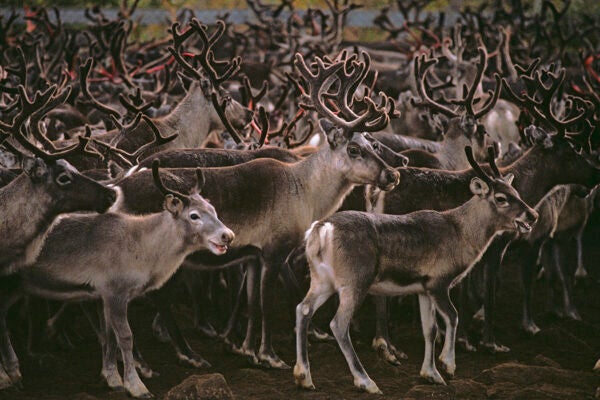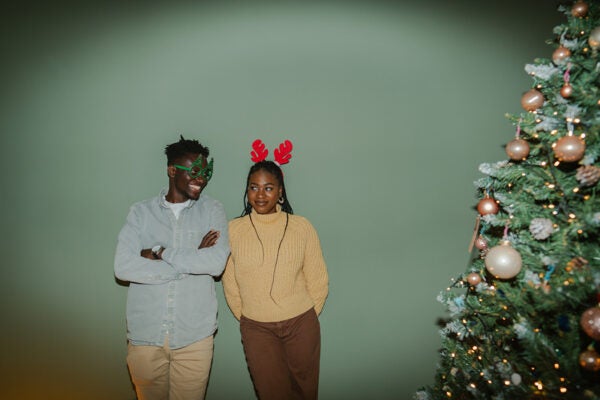In 1549, the great cook Bartolomeo Scappi was presented with a challenge: cooking for a papal conclave in Rome. The cardinals were supposed to be kept in strict seclusion throughout, so each delivery was carefully inspected for secret messages and then passed through a revolving door to the inner sanctum. Pies were forbidden, as were whole chickens—it would be too easy to hide a note inside.
As the conclave dragged on, writes historian Frederic J. Baumgartner, the cardinals’ comforts were reduced in order to push them toward a decision—meals were pared down, servants sent home, and the windows in the chapel were blocked off, making the air stuffy and stale. Crammed in tiny wooden bunks in the Cappella Paolina and the Sistine Chapel, the cardinals grew more and more tense. When a leading candidate took ill and died, they immediately began to sling around accusations of poisoning.

Outside, European monarchs did their level best to meddle continuously in the process, while handwritten newsletters called avvisi flew around the city, spreading the latest rumors. The Roman bankers had their own interest in the outcome, in the form of a lively betting pool; as the conclave continued, they stopped taking bets on which cardinal would be chosen and started taking bets on when it would finally end (including 1 to 10 odds for “never”). The conclave finally concluded on February 7, putting an end to more than two months of seclusion for the cardinals and uncertainty for the world outside.
There were good reasons to push for a speedy process. Popes of the late and post-Renaissance eras weren’t just spiritual figures, but political leaders; the death of the pontiff created a power vacuum, writes historian Laurie Nussdorfer. The papal courts went out of session; the jails were opened, and all the prisoners were paraded to the Castel Sant’Angelo on the other side of the city. Trigger-happy neighborhood militias prowled the streets, getting into petty skirmishes with one another. It was a particularly difficult time for the city’s Jewish population, members of which were harassed by both the mobs and the police. One observer, writing in 1671, claimed that
If the Murtherers and other mischievous persons be not surpriz’d in the very Facts, and can make a shift to abscond themselves and keep out of the way till the creation of a new Pope, they return to their habitations as if they had committed those crimes in some other Countrey.
It was a time set apart from the normal flow of life. There were even special coins issued only when the Holy See was empty, emblazoned with a parasol over two crossed keys.
Often, the locals took advantage of the interim to vent frustration against the previous Pope. Statues of former pontiffs, “erected by the people of Rome,” were dispatched by the people of Rome. After the death of the highly unpopular Pope Paul IV, a mob decapitated his statue and dragged it around the city for four days, ultimately laying it ignominiously to rest in a stable. Bernini’s marble statue of Pope Urban VIII narrowly escaped the same fate, writes art historian Karen J. Lloyd; stymied by guards, the people settled for grinding a stucco image of the dead pope into dust. You can read a pragmatic purpose into this violence-in-effigy—at the very least, it gave the next pope an idea of what not to do.

On another occasion, local authorities took advantage of the pope’s absence and hired a wizard to purge the city of plague and conflict. As architectural historian Charles Burroughs describes, “a certain Demetrios, identified in the sources as a Greek and as a wizard, presented himself to the local authorities with an offer to rid the city of pestilence.” This outsider ritually led a wild bull, magically and temporarily tamed by incantation, through the streets, drawing ever closer to the Vatican, until he was finally arrested by papal authorities. (He was later broken out of prison by a crowd of supporters.)
To be fair, the cardinals themselves weren’t immune to superstition. They drew lots for their bunks, and some places in the Sistine Chapel were held to be more auspicious than others. If you were looking to become Pope, you’d better hope you were sleeping under the painting of St. Peter receiving the keys from Christ, or Joshua receiving the golden rod from Moses; failing that, a spot by the place where the papal throne usually stood might be a good enough omen.
The uncertainty and intrigue of the sede vacante gave birth to a unique genre of art: the conclave print. In these prints, writes art and architectural historian Evelyn Lincoln, tiny scenes—bird’s-eye views of Vatican City, cardinals praying, lines of Swiss Guardsmen on the march—would mingle with architectural floor plans of the rooms in which the conclave took place.
Weekly Newsletter
To the outside viewer, these had effect of turning the barricaded buildings transparent; floating over Vatican City like the eye of God, you peer through the ceiling at the secret inner workings. In the prints that circulated in Catholic countries, the Holy Ghost, in the form of a dove, hovered hopefully over the proceedings; in Protestant countries, that detail was omitted. Oftentimes, the same print would be reused from one conclave to the next, with only the names of participating cardinals updated.
We now live in the information age and no longer rely on handwritten avvisi and recycled prints to get our news. And yet the seal of secrecy on the conclave is stronger than ever before. As Baumgartner notes, we know much more about what happened in the conclave of 1549–1550 than we do about any of the recent ones. The Vatican does still release sede vacante coins, however, featuring the same parasol insignia, now on a Euro.







